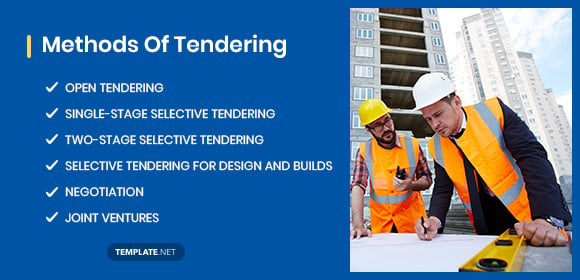What is Construction Bidding – Basics and Beyond
Even with the emergence of new and better technology, more work opportunities, and the changes in the lifestyle of human beings, the construction industry remains one of the constants in this world. From building infrastructures here and there, the chances found in the industry are endless. So, entrepreneurs who want to start a construction business on the right path.

What is Construction Bidding – Basics and Beyond
Together with the right business plans, appropriate marketing strategies, and efficient construction business management, the newly formed construction enterprise will survive the competitive nature of the construction industry. Before marching to battle, the business must have a rundown on construction bidding to level with competitors. This article will provide the necessary information about construction bidding for the convenience of companies.
What is Construction Bidding
Like any other business in trade and commerce, the construction industry has competitions in the form of construction bidding. For a better understanding of the term, construction bidding is a construction company’s submission of construction proposals and construction plans, otherwise called tender, to the owner of the property. The competing firms submit these construction work proposals, which include construction project cost estimates, approximate billing calculations, firm prices, and blueprints. The owners will gather the tender from each company and decide which one fits best for their project. The process of submitting these documents is a formal process that benefits the builder and owner.
Why Construction Bidding is Important
Bidding, an integral part of this business sector, since it promotes competitiveness in the market. Without competition in the industry, enterprises will not discover their advantages and disadvantages in the business. Moreover, construction bidding is essential for contractors as the method opens opportunities to view what the subcontractor can offer to the owner.
With that, most of the vying construction firms have to showcase their capacities and best offers in terms of the construction labor cost estimates, cost estimate software prices, and building construction cost estimates. Besides, construction bidding opens doors for new and emerging construction companies to present their skills and expertise.
Things Contractors Must Consider Before Bidding

Most contractors have the option to submit tender after tender to different companies. However, it’s not the best choice to make if the business is relatively new to the industry. But even the leading contractors in the business refrain from sending these documents without consideration of the project. Besides using contractor bid estimate templates and knowing the feasibility of contractor business plans, contractors have to consider other points before submitting the tender.
Project Delivery (Procurement Methods)
Contractors should first consider the background of the owner to avoid legal problems in the future. Next, the owner’s budget and project investment proposal design come into mind. Each of these things must be acceptable to the contractor’s terms and capacity. For the possible safety practices and health risks, contractors can use the project planning checklist to determine the hazards.
Traditional Procurement Routes:
Often referred to as design-bid-build, this method has a linear procedure with a consultant team developing a design and then appointing it to a contractor for completion, e.g., lump-sum, cost reimbursement, and re measurable.
Alternative Procurement Routes:
Any method of procurement that’s distinct from the traditional approach is an alternative route for the contractors, e.g., early appointments, fixed prices, and exclusive contracts.
Contract Types
Before sending any tender, contractors should look into the type of contract the owner of the project favors. Knowing the Engineer and Contractor restrictions and responsibilities as well as the contract conditions for the project helps with the construction company’s final decision. By understanding the scope of work and the billing processes, the owner and builder relationship may continue.
Construction Bidding Process

In bidding for massive construction projects, a simple conversation between owner and prospect builder will not suffice. A professional and formal bidding process or method should happen to give opportunities to other construction businesses or contractors. While some construction companies employ a bidding strategy to have an ace among competitors, others prefer to choose projects based on the interest of their enterprise.
Bid Solicitation
The owner notifies and distributes the invitation to bid letters via Invitation For Bid (IFB) or a Request For Proposals (RFP) forms to selected prospects. There are no announcements for the event, and it’s usually done in a private and small gathering. Some bidders request for construction quotations and proposals depending on the confidentiality of the project.
Bid Submission
For the bid submissions, builders have to send in their construction bid proposals before the set deadline. The owners send the invitation to tender for construction contracts to suitable contractors, and then the builders create the required document. The contractor’s bid submission includes records, business information, managerial strategies, cost estimates, and labor capacity.
Bid Selection
In this part, the owner receives the heavy construction bids of different development companies and then selects a winner. There will be comparisons between the pricing of each bidder with the highest favor going to the contractor with the lowest price. Some of these contractors make use of contractor bid templates to plot their plans. Also, note that government construction projects have a stricter process than private projects.
Contract Formation
As the last phase of the bidding process, the selected construction company and owner settle on the legalities of the partnership. There will be a time and material contract that caters to the needs and requirements of the two parties, and each will have it signed. Adjustments to the small construction contract are possible with the approval of the owner and builder.
Methods of Construction Tendering (Bidding)

To reiterate, a tender is a structured submission presented by builders who want to be the contractors of the project. In another way, owners also send solicitations like construction bid forms to various contractors to invite them for bidding. As a whole, tendering matters to the two groups. Some companies use tender action plan forms to make their invitations to construction firms formal, while others prefer template samples.
Open Tendering
Through this method, the owner gives equal opportunity to every construction company to submit their tender. On most occasions, the owner uses a construction advertisement to promote open tendering. The construction business can send their equipment lease proposals and equipment cost analysis on the project. With that, the owner can choose which party works best for them. For larger projects, a pre-qualification process happens before companies can send their tender.
Single-Stage Selective Tendering
The method takes a traditional route with the process involving the client sending invitations to prospects contractors. After looking at previous works of construction companies, the owner selects a handful and invites them to submit a tender. The selective tendering is more suitable for commercial construction bids or complex contracts and deals. However, most new businesses get excluded from this tendering process.
Two-stage Selective Tendering
For this method, the owner asks for the pricing parameters of the contractors—an early appointment with the chosen construction company or contractors. Later, the owner will ask these contractors to send drawings based on the estimated costs. Negotiation will take place to determine the fixed price of the project. Most owners use construction bid checklists to lay out the things to accomplish for the tendering process.
Selective Tendering for Design and Builds
This method allows owners to choose one or a few contractors that might be their partner in the project construction. The client then asks the contractors to send in their design phase plans and proposals for the project. After evaluation, the owner will decide the contractor. Through the owner and design-builder agreement, the two parties can determine the pricing of the construction.
Negotiation
In negotiation, the client plans to add or extend the contractor’s work scope while still working for the client. This usually happens with a single supplier rather than a whole bunch of contractors. If there are possible additions to work, the design-builder and contractor agreement can have amendments on the payments and duration of work.
Joint Ventures
Two large or smaller companies—sometimes, more than two enterprises—merge together to form an alliance. These companies share resources and contacts to which receives benefits from the other and vice versa. The process is for more extensive and more complex projects that involve the skills of more people. The companies have joint venture agreements for the convenience of the involved organizations.
Useful Construction Bidding Websites
Selecting the construction company for projects can be a tedious job, time-consuming for busy entrepreneurs, and a long process of looking through the applications of vying businesses. Instead of browsing long pages of achievements and project appraisals, most clients opt to choose the new technique that makes searching for construction companies easier. Through contract bidding websites, owners can find the builder they need for the projects. On the other hand, construction companies can use the site to find the right plans that fit their capabilities and resources. Bidding websites become an essential tool for businesses that have specific criteria and requirements.
Here are some useful bidding websites that both owners and builders can utilize for their work: Construction.com, iSqFt.com, GovernmentBids.com, cmdgroup.com (formerly ReedConstructionData.com), ConstructionWire.com, ConstructionBidSource.com, and BidClerk.com. These websites are the tip of the iceberg; there are more sites available on the web.
Technology is Reshaping The Construction Bidding Process

Through the years, the new generation integrated the bidding concept in their commercial and public projects. And even with the rise of modern technology, the bidding process continues to adjust to the changes. Indeed, technology is reshaping how companies do bidding—from using commercial construction bidding software to contractor estimating software.
With these improvements, more time is for the construction process of the establishment, and the companies garner more energy and effort on other responsibilities. Moreover, construction management websites prove to be an ally in lessening the hassles of running a construction business.
Tips to Win More Construction Bids

The construction industry has a competitive nature. Different construction enterprises vie for the same project, and sometimes getting that particular work is impossible. But with the help of practical tips, construction companies can surely get the projects they want. First, companies need to consider that the lowest bids don’t always equate to getting the project. This time, the value, commitment, and level of expertise also count as a valid requirement for clients. Besides looking at bidding websites, the contractors should also be aware of construction bid advertisements that might pop out somewhere else. So, here are three essential points to consider.
- Know Where You Stand Best – Determine the places where you excel and keep striving to be the best in that area. It doesn’t mean that you stop growth; instead, it means that you know your strengths and qualifications.
- Do Research and Background Study – Before jumping into the project and sending plans and construction proposals, you have to do some research. Make sure you have a clear understanding of the project and its purpose.
- Choose the Projects, Don’t Rush – Before signing that residential construction bid template or construction bid worksheet, you have to choose the projects accurately. Never rush into something that you have prior knowledge or background.
Conclusion
For a long time, the process of construction bidding has been an integral part of the construction business. Skimming through construction news and updates, people will see construction business trends, and it’s relevance to the public. Moreover, it opens opportunities for many companies to showcase their skills and capabilities. Construction bidding, construction cost estimating, and several construction processes are essential parts of the business. And fully clothing yourself with knowledge in the industry, especially about construction bidding, gives you more advantage over competitors.






